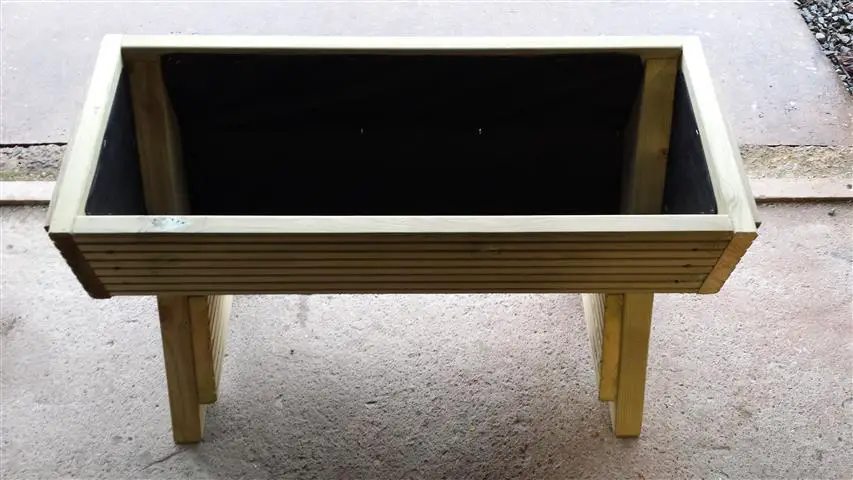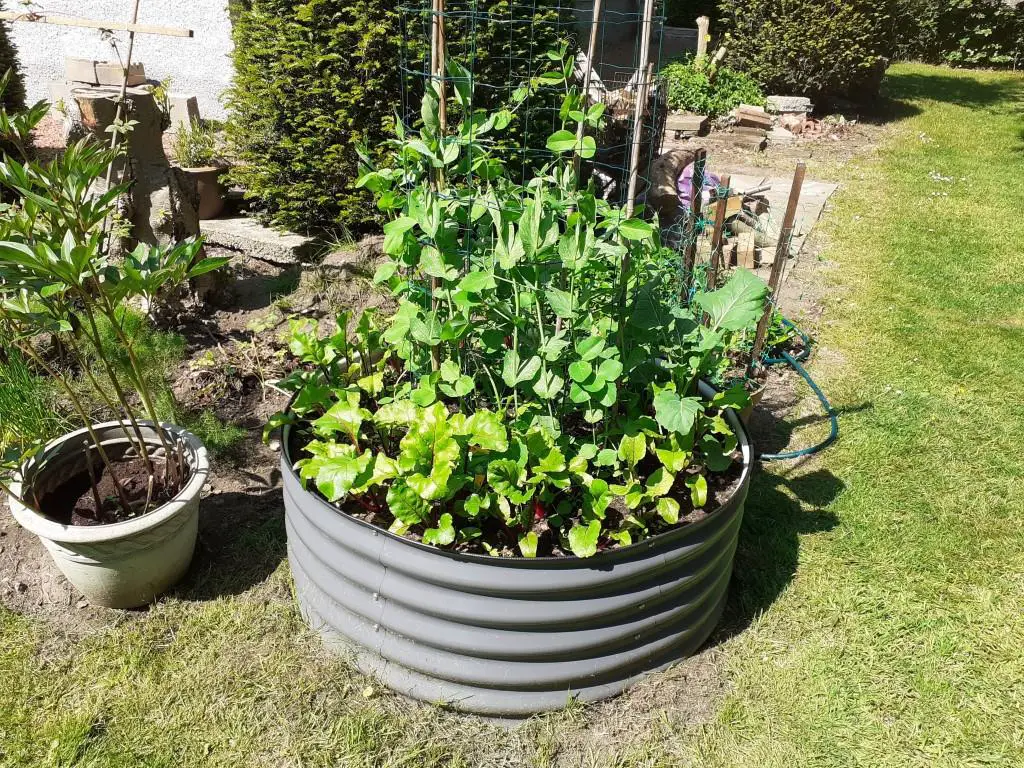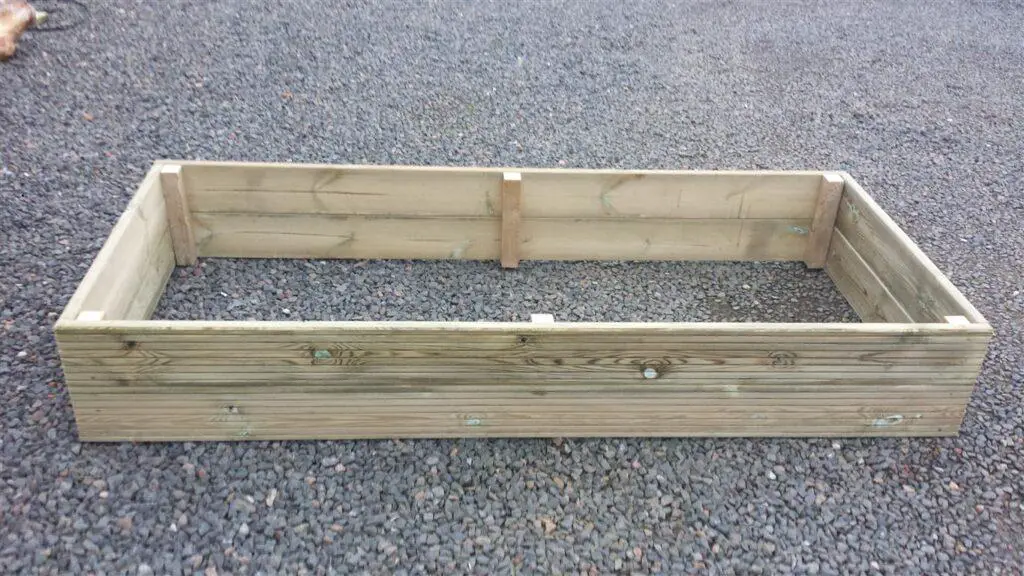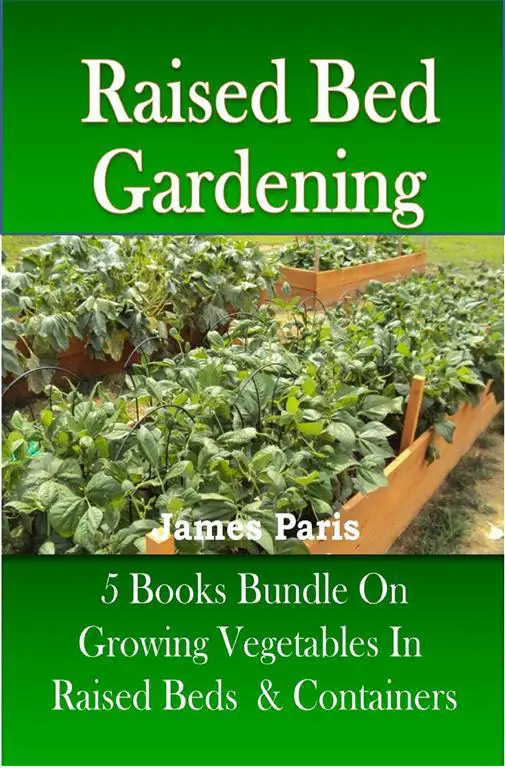Creating your own Raised Garden Bed is something that I would definitely recommend if you have not already done so. As I believe the advantages of growing vegetables in particular in a raised bed setting are many and varied.
However, along with the many questions that come along with this no-dig gardening method is a simply this…should you or should you not line a Raised Bed, and is it ok to use plastic?
The answer I always give is YES, it is perfectly fine to line your raised bed with plastic. However be aware that plastic is non-porous, and will retain moisture, which may or may not be your intention
As intimated however, there are both advantages and disadvantages in lining a raised bed with plastic material.
Advantages of lining raised beds with plastic.
- Plastic prevents a timber raised bed from leaching away the water from the soil by absorbing it into the wood and drying out the bed quicker. This is especially important in areas prone to drought or long dry periods.
- It prevents any contamination from the timber from leaking back into the soil and thereby possibly contaminating the vegetables.
- Plastic lining may lengthen the lifespan of the timbers used in the raised bed construction.
Disadvantages of plastic liner in raised beds.
- Plastic lining will on occasion retain too much moisture, with the possibility of the bed becoming waterlogged and unsuitable for growing your veggies.
- The plastic can prevent the timber from ‘breathing’ and result in fungal contamination or rotting timber, in certain circumstances.
In the case where the raised bed can become waterlogged when lined with plastic, there is a simple solution – perforate the plastic in areas throughout before adding the topsoil into the bed.
This will allow drainage and prevent any problems with waterlogged soil.
Is there an alternative to lining a bed with non-porous plastic?
Indeed there is. There are many types of garden weed control fabric available to purchase, most of which offers an alternative option to plastic liner.

Personally I choose the woven fabric of the type used by landscapers as it will last many years – probably the lifetime of the raised bed.
Woven fabric is ‘naturally’ porous so you will have no problem with the bed becoming waterlogged, and it will still protect the timber to a smaller degree than non-porous plastic.
Should the base of a Raised Bed be lined?
This is debateable as it depends on what you are setting your Raised Bed upon, soil, concrete, gravel etc.
If for example you are placing the structure on ground that is covered in invasive weeds that are likely to grow up through your raised bed soil, then it is certainly advisable to install a liner on the base or over the ground area.
Either woven landscape material or plastic liner will do the job just fine – just remember that if you use plastic you must perforate the liner with a few holes to allow for drainage.
Likewise, if you are likely to be troubled with burrowing creatures like moles, gophers, mice or rabbits, it is advisable to put down not only a liner but also some form of small scale wire mesh to prevent ingress of destructive pests.
Raised Bed drainage.
It is always wise to make sure your raised beds are properly drained, much in the same way that you would add drainage to plants grown in a container.
Depending on the depth of the raised bed, I would add a minimum of an inch or 2 of gravel on top of the liner before I add my soil.
If it is a deep bed perhaps over 18 inches deep, then I would add some broken bricks or other material such as broken pottery then the gravel.
This not only helps with the drainage, but also helps fill the bed a little cheaper than with soil/compost only.
Another possible issue could be if you want to place your raised bed on top of a concrete or non-permeable surface. In this case there is the distinct possibility that your bed will become ‘sour’ due to poor drainage – even with gravel added.
The answer to this problem is simple enough. Drill a few small holes around the structure about 1 inch from the bottom.
This will allow the water to seep away even if the bed is ‘sealed’ to the concrete platform.
Plastic or Metal Raised Beds
So far, we have looked at lining timber raised beds with plastic or woven liner, but what about timber or metal raised bed gardens, do they need a liner?

Well it may seem obvious – but I will say it anyway…Metal or plastic raised bed structures do NOT need lined.
There is simply no requirement for it.
Both metal and plastic raised beds last many years longer than their timber counterparts, which is just as well really as they are much more expensive overall.
A plastic liner will not add anything to a metal raised bed, neither lifespan nor soil integrity is improved using this technique.
Summary:
So in conclusion. Whilst I believe it is a good idea to line your raised bed with plastic liner, there are instances where it is not absolutely necessary.
Check out your own situation. What material you plan to build your raised bed with. You local weather or climatic conditions, and upon what material you are laying your structure.
Only then can you make a sound, informed decision.




